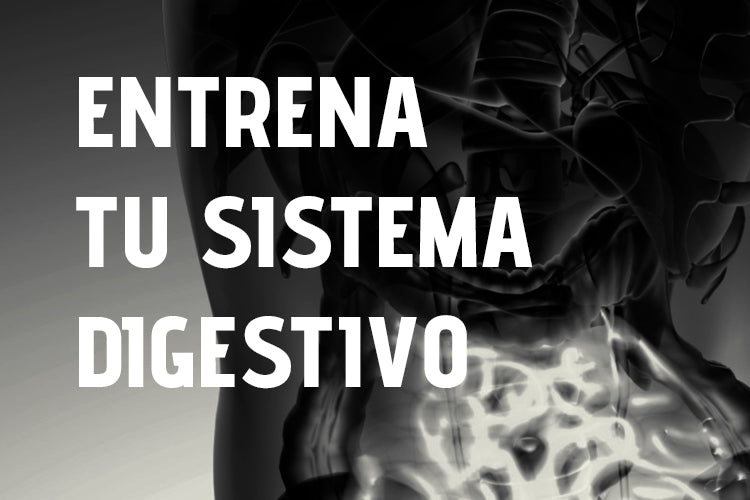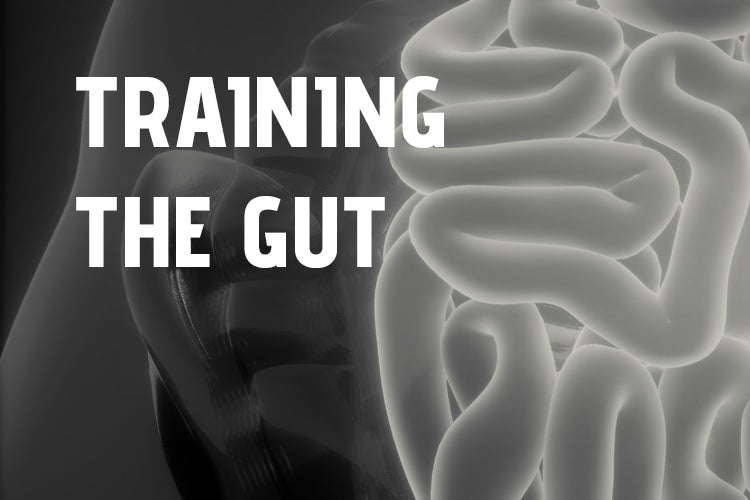Caffeine in sports is one of the nutritional and ergonomic aids with the greatest scientific evidence, supporting its use as an extra performance aid. In fact, the Australian Institute of Sport (AIS) itself classifies it as a Group A supplement, referring to those aids that have proven to be most effective in certain protocols and subject samples.
The performance-enhancing effect of acute caffeine ingestion in endurance sports may be associated with the effect of this substance to improve:
- Maximum oxygen consumption (1)
- Exercise intensity at the anaerobic threshold (2, 3)
- The use of fat as fuel
Which allows greater availability of muscle glycogen at the end of exercise (4, 5).
The main physiological mechanism behind the performance-enhancing effect of caffeine in endurance sports is associated with caffeine's ability to block adenosine A1, A2a, and A2b receptors in the central nervous system.
The blockade of adenosine receptors with caffeine ingestion, confirmed in both animals (6) and humans (7), is based on three different characteristics of caffeine when ingested orally: rapid absorption in the intestine (8), its ability to cross all biological membranes, including the blood-brain barrier (barrier between blood and brain), due to its lipophilic nature (9) and its structural similarity to adenosine (10).
There, following acute caffeine ingestion and its subsequent distribution to different tissues, caffeine blocks specific adenosine receptors . This blockade partially eliminates the fatiguing effect of adenosine on the central nervous system (fatigue), which explains the benefits for improving endurance performance.
Mechanisms of action in caffeine consumption for sports
First, how does caffeine affect the body? Caffeine is a central nervous system stimulant that works by blocking adenosine receptors, a neurotransmitter that promotes feelings of drowsiness and relaxation.
By inhibiting the effects of adenosine, caffeine increases mental alertness , improves concentration, and can reduce the perception of exertion during physical activity, allowing athletes to train at greater intensity and for longer periods.
What biological systems are involved?
The impact of caffeine in sports extends to several biological systems:
- Central nervous system: Improves coordination, reduces fatigue, and increases alertness levels.
- Cardiovascular system : Increases heart rate and blood circulation, improving the transport of oxygen and nutrients to the muscles.
- Metabolism : Stimulates lipolysis, the process by which stored fats are mobilized to be used as energy, thus optimizing the use of available fuels during exercise.




So what is caffeine refill?
This is known as progressive reinforcement . The pre-competition or training dose is then administered every hour and a half, and then the same dose is taken again, continuing until the end of the event.
Therefore, caffeine supplementation in sports would only be used in events lasting more than two hours. With our GLUT 5 ON range, you'll get the correct, scientifically proven dose of 200 mg, and you can continue supplementing with caffeine throughout the competition.
In addition, since it contains 60 g of carbohydrates with a 1:0.8 ratio and 350 mg of sodium, you can take it as a pre-workout or competition 40 minutes to 1 hour beforehand, depending on your goal, and thus reach an intake of 3-6 mg/kg of weight.
An example of a caffeine protocol for sports would be the following:

Do I need to stop drinking caffeine days before a competition?
However, evidence of tolerance to the stimulant effects of caffeine in humans is inconclusive. In cognitive performance variables, caffeine administration in sports improves performance equally in regular and non-regular caffeine consumers (11) or even a greater benefit in performance was found in high caffeine consumers than in moderate caffeine consumers (12).
Several investigations indicate that the effectiveness of caffeine in improving physical performance may be reduced in individuals who consume moderate to high daily doses of caffeine (130-300 mg/day) compared to low caffeine consumers (40-50 mg/day) (13, 14).
However, other research has determined that habitual caffeine consumers for exercise could also benefit from its ergogenic effects, even when their self-reported daily caffeine consumption exceeded 300 mg/day (14, 15).
Differences in the research protocols chosen to study this question—specifically, the use of individuals with different daily intakes and caffeine habituation periods—likely contributed to the different results. However, current research suggests that caffeine may be ergogenic even after habituation.
In our opinion, given the studies on both sides, we would advise you to try it in two different competitions. The first time, you should stop consuming caffeine 2-3 weeks beforehand, and the second time, you should continue consuming your usual amount.
With the aim of comparing sensations and choosing the best caffeine protocol for sports in your case.
Benefits of caffeine in different sports
The use of caffeine in endurance sports , such as cycling or running, has been shown to prolong exercise duration by delaying fatigue and improving energy efficiency.
In strength disciplines, such as weightlifting, it can increase the capacity for force production and muscular endurance.
Caffeine consumption in team sports improves reaction speed, mental agility, and decision-making under pressure.
What might be the optimal caffeine dose depending on the sport?
The optimal dose of caffeine varies among individuals, but studies suggest that doses of 3–6 mg per kilogram of body weight, as mentioned above, can significantly improve athletic performance.
It is crucial to adjust the dosage and timing of intake to maximize the specific benefits sought in each type of sport and minimize adverse effects.
Literature
- Lara, B.; Ruiz-Moreno, C.; Salinero, JJ; Del Coso, J. Time course of tolerance to the benefits of caffeine on performance. PLoS ONE 2019, 14, e0210275.
- Berry, M.J.; Stoneman, J.V.; Weyrich, AS; Burney, B. Dissociation of ventilatory and lactate thresholds after caffeine ingestion. Medicine. science Sport exercise. 1991, 23, 463–469.
- McNaughton, LARS Two levels of caffeine ingestion on blood lactate and free fatty acid responses during incremental exercise. Res. P. Exercise. Sport 1987, 58, 255–259.
- Ruiz-Moreno, C.; Gutierrez-Hellin, J.; Amaro-Gahete, FJ; Gonzalez-Garcia, J.; Giraldez-Costas, V.; Perez-Garcia, V.; Del Coso, J. Caffeine increases whole-body fat oxidation during 1 h of cycling at Fatmax. EUR. J. Nutr. 2020, in press.
- Rib, D.L.; Dalsky, family doctor; Fink, WJ Effects of caffeine ingestion on metabolism and exercise performance. Medicine. Science Sports 1978, 10, 155–158.
- Davis, J.M.; Zhao, Z.; Actions, SA; Mehl, K.A.; Buggy, J.; Mano, GA Central nervous system effects of caffeine and adenosine on fatigue. Am. J. Physiol. Integrate Physiol compensation. 2003, 284, R399–R404.
- Elmenhorst, D.; Meyer, P.T.; Matusch, A.; Winz, OH; Bauer, A. Caffeine occupancy of human brain A1 adenosine receptors: in vivo quantification with 18F-CPFPX and PET. J. Nucl. Medicine. 2012, 53, 1723–1729.
- Magkos, F.; Kavouras, SA Use of caffeine in sports, pharmacokinetics in man and mechanisms of cellular action. Critical Rev. Food Science. Nutrition 2005, 45, 535–562.
- McCall, A.L.; Millington, W.R.; Wurtman, RJ Caffeine transport across the blood-brain barrier: Dose-related restriction of adenine transport. Life Sciences 1982, 31, 2709–2715.
- Chee, Hong Kong; Oh, SJ Molecular Vibration-Activity Relationship in Adenosine Receptor Agonism. Report genome. 2013, 11, 282
- Crystal F. Haskell, David O. Kennedy, Keith A. Wesnes & Andrew B. Scholey. Cognitive and mood improvements of caffeine in habitual consumers and habitual non-consumers of caffeine. Psychopharmacology volume 179, pages 813–825 (2005)
- Attwood, S. Higgs & P. Terry. Differential responsiveness to caffeine and perceived effects of caffeine in moderate and high regular caffeine consumers. Psychopharmacology volume 190, pages 469–477 (2007)
- Louise M. Burke. Communicating Sports Science in the Age of the Twittersphere. International Journal of Sport Nutrition and Exercise Metabolism, 2017, 26, 1 -5
- Douglas G. Bell, and Tom M. McLellan. Exercise endurance 1, 3, and 6 h after caffeine ingestion in caffeine users and nonusers. 01 OCT 2002
- Lívia de Souza Gonçalves et all. Dispelling the myth that habitual caffeine consumption influences the performance response to acute caffeine supplementation. JUL 18, 2017
- Carlos Ruiz-Moreno ORCID, Beatriz Lara, Jorge Gutiérrez-Hellín 2ORCID, Jaime González-García ORCID and Juan Del Coso. Time Course and Magnitude of Tolerance to the Ergogenic Effect of Caffeine on the Second Ventilatory Threshold. Received: 28 October 2020 / Revised: 8 December 2020 / Accepted: 9 December 20202




Leave a comment
This site is protected by hCaptcha and the hCaptcha Privacy Policy and Terms of Service apply.